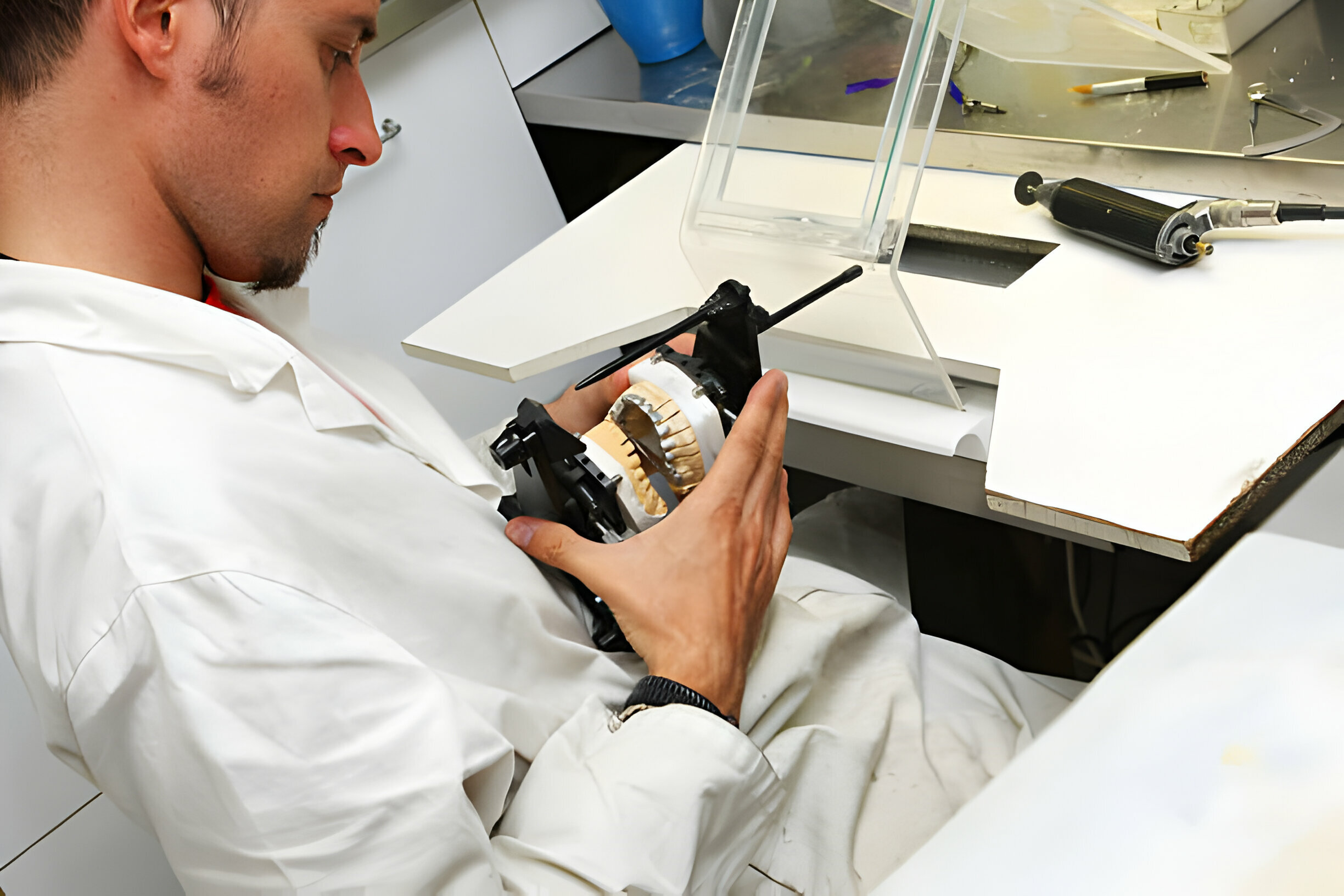Summary:
Do you know 65% of individuals require orthodontic treatment to correct their smile?
This is because not all of us are blessed with perfectly aligned teeth that can contribute to a flawless smile. You may have gapped, chipped, and uneven teeth, which can dull your smile.

So, does that mean you’ll have to live with an imperfect smile?
No! You can now straighten your teeth and enhance your appearance, thanks to orthodontic treatments.
Yet, there are several confusions centered around orthodontic treatments, which makes people reluctant to choose them. If you are one of them, you’ve landed on the right page.
In this blog, we shall discuss topics like:
- Orthodontic Procedures And Their Types
- Different Stages Of Orthodontic Treatments – Explained!
- Who Can Benefit From Orthodontic Treatments?
- Aftercare Tips Post Orthodontic Treatment
Continue reading to understand the stages of orthodontic treatment in the following sections.
Orthodontic Procedures And Their Types
Orthodontics is a specialized branch of dentistry that focuses on the alignment of teeth and jaws. The primary aim of the treatment is to correct oral imperfections and improve smiles. The branch of orthodontic treatment is vast and involves both fixed and removable appliances.
Once you consult your dentist in Mississippi, they will suggest either of the two solutions, namely:
- Fixed appliances: As the name suggests, these appliances are fixed and remain attached to your cavity throughout the treatment. Examples include traditional braces, lingual braces, self-ligating braces, palatal expanders, and bonded retainers.
- Removable Braces: Removable braces are another unique example of modern orthodontic treatment. They are easily removable during the treatment. Examples include aligners and retainers.
Different Stages Of Orthodontic Treatments – Explained!
Orthodontic treatment is a complicated process that can correct dental misalignments, enhance oral function, and improve oral health. Through a series of meticulously planned stages, orthodontists work to achieve optimal alignment of the teeth and jaws.
Here’s a detailed description of the stages of orthodontic treatments:
Stage 1: Initial Consultation and Assessment
The process begins with an initial consultation with a qualified restorative dentist. Your orthodontist will assess your dental and facial structure during this stage, discuss concerns, and outline treatment options.
They may also conduct diagnostic tests such as X-rays, photographs, and impressions to assess your dental condition elaborately.
Stage 2: Planning
After the assessment, our orthodontist will devise a treatment plan to correct your misalignment. This plan considers your specific needs, the severity of the misalignment, and desired outcomes.
Based on your case, your orthodontist may recommend various orthodontic appliances such as braces, clear aligners, or functional appliances.
Stage 3: Active Treatment
This stage involves implementing the chosen orthodontic treatment. For traditional braces, our orthodontists may bond brackets and adjust wires to your teeth. This is done to guide your tooth movement into alignment periodically. Your smile expert may also recommend clear aligners to shift your teeth gradually into the desired position.
Stage 4: Retention
The retention phase begins once your teeth have moved to the desired position. Orthodontists provide retainers to maintain the new position of your teeth and prevent relapse.
Depending on the case, retainers may be removable or fixed behind the teeth. Consistency while wearing retainers and regular follow-up appointments are crucial for long-term success.
Stage 5: Post-Treatment Follow-Up
Following the active treatment and retention, your dentist for orthodontics in Mississippi will schedule periodic follow-ups to examine the success.
These appointments are necessary to monitor the stability of the results and address any concerns that may arise. They ensure that the orthodontic treatment continues to yield lasting benefits and optimal oral health.

Who Can Benefit From Orthodontic Treatments?
Orthodontic treatments are essential for enhancing oral health and correcting dental issues. Here’s a list of who can benefit from orthodontics:
If You Have Crowded Teeth
This condition arises when your jaw has insufficient space for teeth to align properly. Orthodontic procedures, such as braces or clear aligners, can gradually reposition the teeth. They help correct misalignment and enhance oral function and appearance.
If You Have Bite Issues
Malocclusions, including overbites, underbites, crossbites, and open bites, can lead to discomfort and functional difficulties. Orthodontic interventions can correct these issues, promoting proper tooth alignment and improving biting function.
If Your Wisdom Teeth Is Troubling You
The birth of wisdom teeth can disrupt existing dental alignment, leading to overcrowding or misalignment. Orthodontists can remove your wisdom tooth to ensure optimal dental alignment.
Aftercare Tips Post Orthodontic Treatment
Congratulations on receiving your orthodontic treatment!
Following aftercare routines is crucial now that your braces or aligners have been removed. Proper care and maintenance will help preserve your orthodontic procedures and yield a long-lasting impact.
Here are some essential tips to help you navigate through the orthodontic treatment:
Brush Your Teeth Regularly
Proper brushing techniques are vital for maintaining good oral hygiene, especially after orthodontic procedures.
Brush your teeth thoroughly at least twice daily with a soft-bristled toothbrush and fluoride toothpaste. If you have braces, pay close attention to all surfaces of your teeth, including around the brackets or wires.
Floss Your Teeth After Every Meal
Flossing helps remove food particles that can get trapped between teeth and orthodontic appliances. Invest in floss threaders, interdental brushes, or water flossers to make flossing more manageable with braces or retainers.
Aim to floss at least once daily, ensuring you clean between every tooth and around wires or brackets.

Handle Your Retainer With Care
If you are provided with a retainer after an orthodontic procedure, it’s essential to care for it properly. Follow the instructions provided by our orthodontist regarding when and how long to wear your retainer each day. Additionally, clean your retainer daily using a mild soap to prevent bacterial growth and odors.
Make Changes In Your Diet
Be mindful of your dietary choices to protect your teeth and orthodontic appliances. Avoid chewy, hard, or sticky food items that could damage your braces or retainer.
Avoid crunchy fruits and vegetables into smaller, bite-sized pieces to reduce the risk of breaking brackets or wires. Lastly, limit your consumption of sugary snacks and beverages.
Embrace Protective Measures
If you participate in sports or strenuous activities, consider wearing a mouthguard to protect your teeth. Your dentist can provide custom-fitted mouthguards to protect your teeth against injuries or dental traumas.
Avoid Harmful Habits
Refrain from habits that can compromise the integrity of your teeth and orthodontic work. Avoid chewing on ice, pens, pencils, or other complex objects that could cause damage. Additionally, refrain from using your teeth as tools to open packages or bottles, as this can lead to chipping or cracking.
Takeaway
- Orthodontic procedures focus on aligning teeth and jaws to improve smiles. There are various types of orthodontic appliances such as braces, expanders, aligners, and retainers.
- The five stages of orthodontic options include consultation, assessment, planning, active, and retention.
- Orthodontic procedures can benefit individuals with dental misalignments, including crowded teeth, bite issues, or wisdom tooth problems.
- Aftercare tips for maintaining orthodontic options include adequate oral hygiene, caring for retainers, dietary changes, protective measures, and avoiding harmful habits.
- For optimal outcomes, it is crucial to follow the orthodontist’s instructions regarding the procedures, aftercare, and maintenance of appliances.
- Don’t miss the possibility of a great smile! Contact our experts at Rowan Family Dentistry to learn more today.

